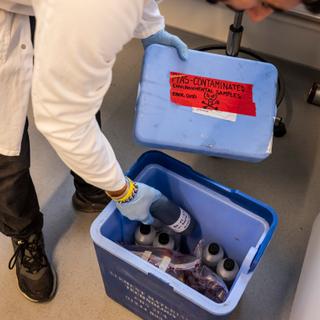


PFAS: Searching for the weapon against 'forever chemicals'
InvestigationScientists around the world are researching ways to break down these carcinogenic molecules and destroy them. The tools being considered include ultrasounds, ultraviolet light, plasma, bacteria and even egg whites.
PFAS, known as "forever chemicals," have been in the news since the extent of contamination was revealed in February 2023 by a Le Monde investigation. These "miracle molecules," widely used after the Second World War, can be found in food packaging, cosmetics, fire-fighting foam and certain medical devices. In addition to their proven toxicity – they interfere with the endocrine and immune systems, and some are already classified as carcinogens by the International Agency for Research on Cancer (IARC) – these synthetic compounds have in common that they are persistent in the environment.
And with good reason: They're mainly made up of carbon and fluorine atoms, whose chemical bond is virtually indestructible. As Marie-Pierre Krafft, a physical chemist and French National Center for Scientific Research (CNRS) research director at the Institut Charles-Sadron at the University of Strasbourg, explained: "The carbon-fluorine bond is the most stable single bond in organic chemistry. This is due to the unique electronic properties of fluorine, which is the most electronegative element."
In just a few years, cleaning contaminated land, water and industrial waste of these PFAS (per- and polyfluoroalkyl substances) has become a major challenge for researchers from a wide range of scientific disciplines. Before even asking the question of how to fund the clean-up, the challenge is to find a way, or rather ways, to solve this chemical puzzle. To break this bond, "we have to resort to much more intensive techniques than for other pollutants, under much more extreme conditions – at very high temperatures or with high concentrations of additives – and carry out successive cycles," said Stéfan Colombano, a research engineer at the Bureau of Geological and Mining Research (BRGM).
You have 87.68% of this article left to read. The rest is for subscribers only.
